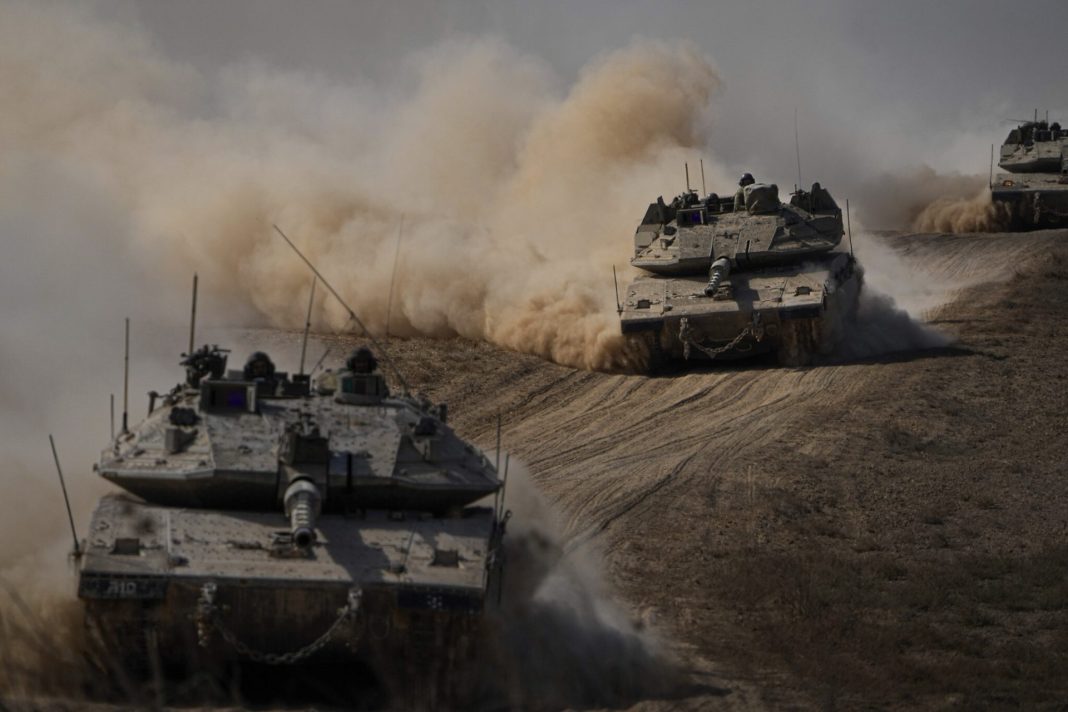A statement from the Israeli army stated that it was targeting villages in localised raids near the border that “pose an immediate and real threat to Israeli settlements on the northern border”.
Heavy shelling, air strikes and drone strikes preceded the operation in southern Lebanon and strikes southern Beirut continued as the ground incursion began.
Israel’s air force and infantry forces accompanied Israel’s ground forces according to the statement in an operation titled “Northern Arrows”.
Earlier on Monday, reports claimed that Lebanese troops had pulled back five kilometres from their positions on the southern border while the Israeli military declared three areas in northern Israel as “closed military zones”.
But, Lebanon’s army on Tuesday denied reports it had withdrawn from southern border positions by several kilometers following Israel’s ground incursion into the country.
Such reports were inaccurate, the Army Command said.
In a public address on Monday from Sheikh Naim Qassem, Hezbollah’s deputy leader, Hezbollah remained defiant.
“We are quite ready, if the Israelis want a ground incursion, the resistance forces are ready for that,” Qassem declared.
Israeli tanks and soldiers have been massing at the northern border for days, according to open-source imagery.
Israel has also been conducting commando-style raids against Hezbollah inside Lebanon which analysts say are designed to lay the groundwork for a larger deployment of forces.
The US State Department on Monday confirmed that Israel is conducting “limited” ground operations in southern Lebanon.
“This is what they have informed us that they are currently conducting, which are limited operations targeting Hezbollah infrastructure near the border,” State Department spokesperson Matthew Miller told reporters.
The US has maintained that Israel has a right to defend itself against Hezbollah, accusing the group of provoking Israel, but stated that it is committed to a diplomatic solution and is seeking a ceasefire.
US President Joe Biden said on Monday that he wanted a “ceasefire now”.
The US took further steps to bolster its military posture.
The Pentagon announced the US was sending to the Middle East “a few thousand” more troops who would come from multiple fighter jet squadrons.
Meanwhile, United Nations secretary general Antonio Guterres stressed he opposed “any invasion of Lebanon”.
The United Nations Interim Force in Lebanon, UNIFIL, is no longer able to patrol southern Lebanon as a result of fighting, the UN noted.
Hezbollah and Israel both exchanged fire across the border.
Since Sept. 23, Israel has launched massive airstrikes against what it calls Hezbollah targets across Lebanon, killing more than 900 people and injuring over 2,700 others, according to the Lebanese Health Ministry.
Several Hezbollah commanders have been killed in the Israeli raid, including Nasrallah.
Hezbollah and Israel have been engaged in cross-border warfare since the start of Israel’s war on Gaza, which has killed nearly 41,600 people, mostly women and children, following a cross-border attack by the Palestinian group Hamas on Oct. 7 last year.
The international community has warned that Israeli attacks in Lebanon could escalate the Gaza conflict into a wider regional war.
